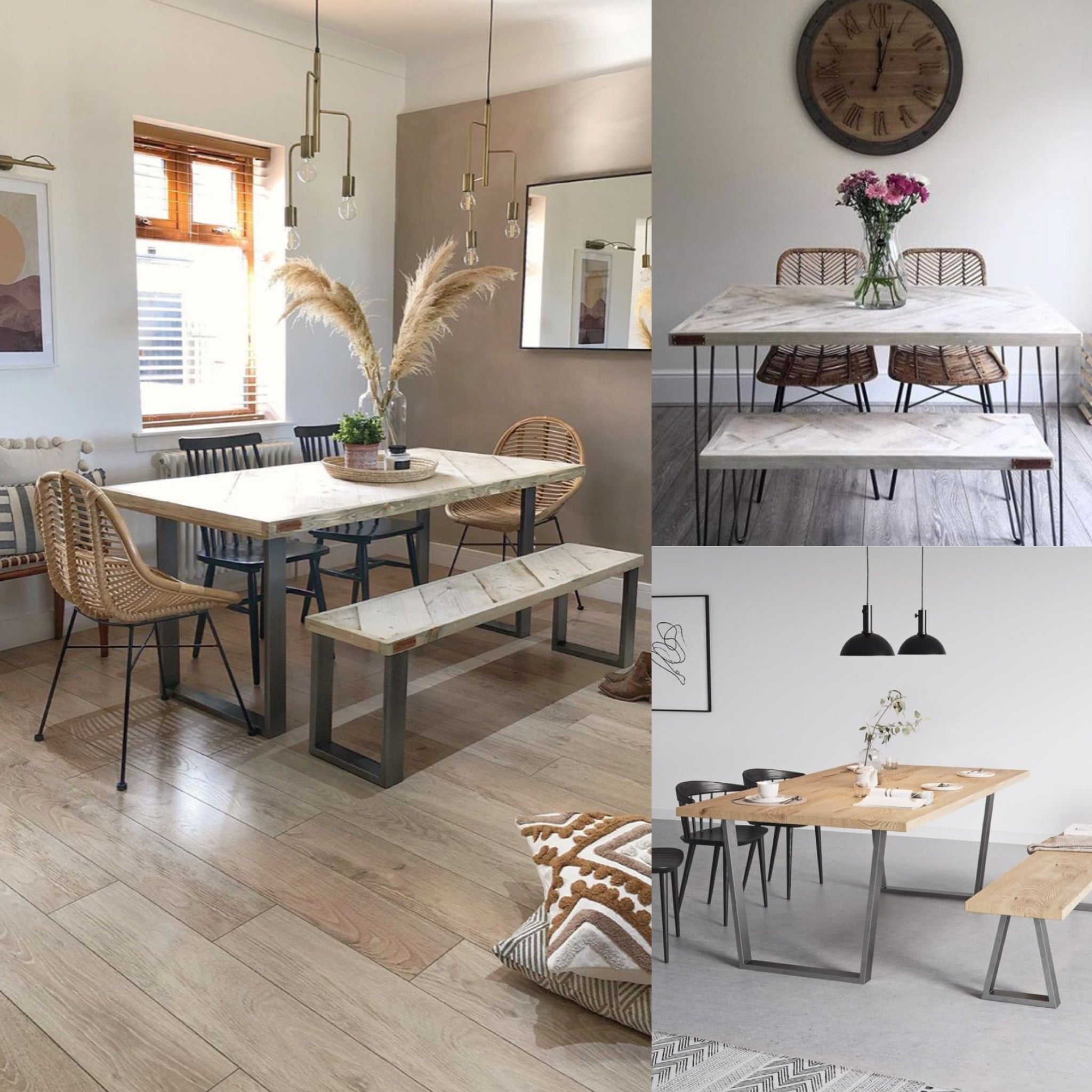The Top Trends in Dining Room Table Legs You Need to Know
The Top Trends in Dining Room Table Legs You Need to Know
Blog Article
From Standard to Modern: Discover the Ideal Eating Room Table Legs for Your Style
While traditional styles such as cabriole and turned legs stimulate a feeling of classic refinement, contemporary styles like hairpin and geometric options provide an opportunity for striking visual passion. As you consider these aspects, the inquiry remains: how can you effortlessly incorporate these varied leg styles to create a harmonious dining experience?
Recognizing Table Leg Styles
The variety of dining-room table leg styles can substantially influence both the appearances and functionality of the space. Each leg design adds unique useful features and visual elements, dealing with varied layout choices and usage demands. Understanding these styles is crucial for selecting the right eating table that straightens with your general interior design vision.
For example, conical legs supply a tidy, classic look that can boost a space's sophistication, while pedestal bases provide security and maximize legroom, making them ideal for smaller sized areas. Hairpin legs, a hallmark of mid-century modern-day style, introduce a commercial style, permitting a ventilated, open feeling. Similarly, trestle legs stimulate rustic appeal, providing durable support and a feeling of eternity.
Wooden legs can bring heat and appearance, whereas steel options typically communicate a streamlined, modern vibe. Inevitably, comprehending table leg styles is vital for creating a natural dining area that reflects individual style while guaranteeing usefulness and convenience.
Standard Table Leg Options
When choosing eating room table legs, traditional choices usually embody timeless sophistication and workmanship. These designs mirror an abundant heritage and a dedication to high quality, making them excellent for those who value traditional aesthetic appeals.
One of the most famous typical leg styles is the cabriole leg, defined by its elegant bent form. This style often features decorative makings and is most commonly discovered in Queen Anne and Chippendale furnishings. One more preferred alternative is the turned leg, which flaunts a series of smooth, rounded shapes that supply a timeless look while maintaining security.
Furthermore, the straight leg, while straightforward, provides a basic and tough structure that can blend flawlessly with a variety of tabletop designs. For those attracted to ornate detailing, claw-and-ball feet legs stimulate a feeling of splendour and can serve as a stunning centerpiece in any dining room.
Last but not least, pedestal bases, although not strictly legs, supply an alternative standard alternative that permits adequate legroom and can be beautifully sculpted. Each of these traditional leg styles adds to the total atmosphere of an eating space, weding feature with aesthetic appeal.

Modern Table Leg Styles
Modern table leg designs offer a varied range of styles that stress tidy lines and ingenious products. These styles typically focus on performance while working as striking centerpieces within an eating room. Minimal visual appeals are prevalent, with legs crafted from products such as metal, glass, and crafted wood, which add to a modern and airy feel.
One prominent style is the hairpin leg, identified by its slim, conical framework that supplies security without overwhelming the tabletop (dining room table legs). This design is frequently found in mid-century modern furnishings and can easily enhance different table shapes. Another trend is making use of geometric forms, where legs might tackle asymmetrical or angular types, adding aesthetic passion and a touch of artistry

Blending Styles for Distinct Areas
Often, home owners look for to produce distinct eating rooms that show their individual design by blending various design aspects. This approach permits the consolidation of diverse aesthetic appeals, causing a harmonious yet distinctive environment. For circumstances, pairing a rustic wooden table with streamlined, modern metal legs can develop an attractive contrast that raises the space's total appeal.
Additionally, integrating vintage table legs with contemporary tabletops can evoke a sense of history while maintaining a modern sensibility. Such combinations not only display individual taste however likewise urge creative thinking, allowing home owners to curate a room next that feels both individual and inviting.
Color plays an important duty in this mixing process; selecting table legs that enhance or contrast with the existing color design can improve visual rate of interest. Whitewashed legs can soften the boldness of a dark table surface, creating a well balanced aesthetic.
Tips for Selecting the Right Legs
Picking the right table legs is important for accomplishing both capability and visual appeal in your dining area. Begin by taking into consideration the overall style of your space. Traditional setups take advantage of legs that feature elaborate makings or transformed designs, while contemporary areas might ask for sleek, minimal designs.
Following, analyze the height and security of the legs. dining room table legs. Typical dining tables range in between 28 to 30 inches in height, so ensure the legs match this dimension for convenience. Additionally, robust products, such as wood or steel, can enhance stability and durability
Examine the leg shape as well-- choices consist of directly, tapered, or pedestal styles. Straight legs use a classic look, while conical legs can add a touch of elegance. Pedestal bases offer sufficient legroom and are excellent for smaller spaces.
Final Thought
In recap, picking the optimal eating area table legs requires cautious consideration of both conventional and modern styles. By integrating leg style, elevation, and product with the overall décor, a natural and welcoming environment can be visit homepage achieved.
The selection of dining space table leg designs can considerably influence both the aesthetics and performance of the area. Inevitably, understanding table leg styles is crucial for creating a natural dining location that mirrors individual design while ensuring practicality and comfort.One of the most iconic typical leg styles is the cabriole leg, identified by its stylish curved form. Straight legs supply a traditional look, while conical legs can include a touch of sophistication.In recap, selecting the ideal dining space table legs calls for mindful consideration of both modern and standard designs.
Report this page